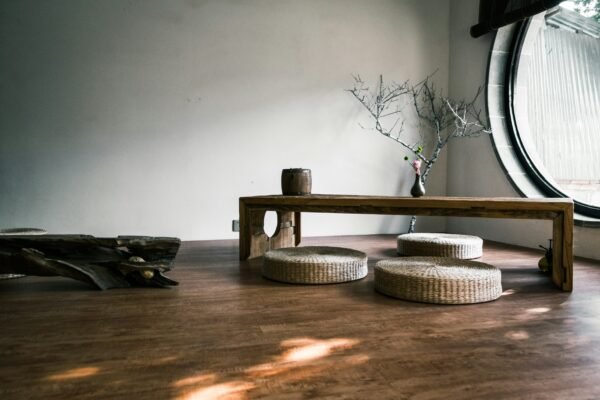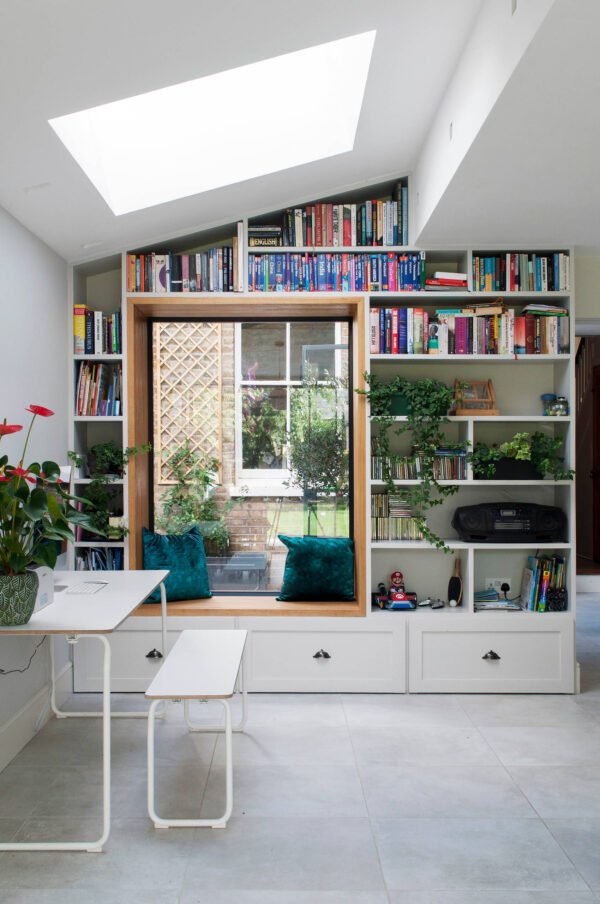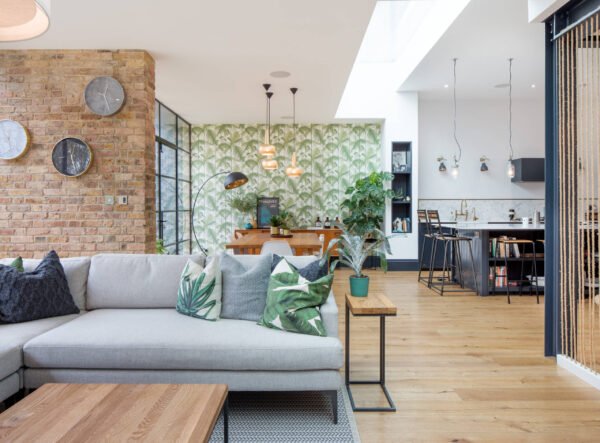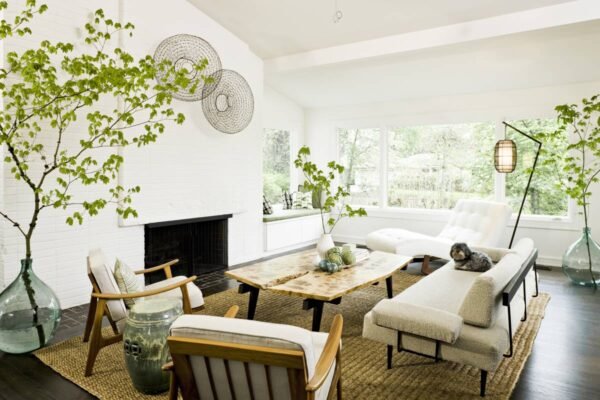The concept of interior design received different contours throughout cultures. Japanese people aim to make their houses calm and serene, while French design is based on glamorous pieces and glow. While some of these interpretations might come from stereotypes, they’re not far from the general personality of a nation.
In multiple customs, interior design is concerned with aspects of psychology, assessing how the environment affects our behaviour and aspiring to enhance its impact on our performance and well-being. For instance, smooth spaces are considered to be nomadic-based, meaning they’re made for people always moving and travelling, such as hotel lobbies, which make us feel more relaxed due to their openness and flexibility.
Nevertheless, studying the link between interior design and psychology is as enjoyable as decorating your house. Still, it may be easier to incorporate if you start with something more manageable ―a biophilic design.

Biophilic interior design is all about natural elements
The biophilic design enhances the idea that artificial interiors must have natural elements introduced to make us feel relaxed and support sustainable well-being. That’s why we choose to take a walk in the park or hike in the woods, because we seek calmness.
While reproducing the same sentiment is tricky, we can include natural materials and patterns in our homes to help connect with nature and ourselves. Taking the outdoors inside helps reduce pollutants, which protects our health while also improving emotional regulation.
What’s the best way to approach biophilic interior design?
Numerous cultural interior design concepts follow the introduction of natural elements inside, such as the Japanese style that focuses on wooden furniture and elements or the Scandinavian interior design that involves the use of functional components and plants. Hence, you can get inspired by plenty of traditional concepts, but here are some guidelines on what needs to be introduced.
Earthy materials and textiles
Wood, stone, and bamboo are the holy trinity of biophilic interior design. Whether we talk about oak wood varnish for your living room or granite open storage, choosing these durable and aesthetic materials can contribute to a happier life. They’re easy to clean and maintain, and their simplicity makes them unchallenging to décor.
Curved and flowy furniture
We’re all used to the cubic furniture pieces that display a modern and cold feeling indoors, but achieving warmth and tranquillity can only be done through unique furniture pieces. These designs are part of the Art Nouveau timeline that leveraged organic motifs, creating arched sofas and juxtaposed materials. Of course, many of these pieces can be only found in vintage shops, so you must care for them with either qualitative wood oil or professional upholstering.
Openness and natural light

Natural light is superior to any kind of artificial lighting, as it contributes to proper circadian rhythms, sleep patterns, and Vitamin D production. That’s why, during the day, it’s best to let all the light inside the house. At the same time, choosing full-spectrum lighting as an alternative to natural is better when incorporated in small fixtures around the house than a big light in the middle of the room.
Plants and flowers all around
The most straightforward way to approach biophilic interior design is to introduce as many plants and flowers around the house as possible. They improve the air’s quality and create a unique aesthetic that can boost productivity and enhance focus. If your lifestyle is rather always on the move, numerous plants thrive without much water or humidity.
Terrene colour schemes
Another essential tip is to paint the walls with earthy colour schemes to mimic the outside because this will help all the elements come together beautifully. For instance, take a look at the following schemes:
- Brown, olive green and light grey;
- Light brown, sea green and beige;
- Dark olive green and golden rod;
- Black salmon, black and thistle;
These can also be considered minimalistic because there’s nothing fancy about earthy tones. Still, they can be stretched to maximalism interior design if you go a little bit bolder and darker.
Can the biophilic interior design concept mitigate sustainability?
If you’re a sustainability lover and want to spread awareness about choosing qualitative materials, this approach is best for your house. It doesn’t require massive changes from your current home, but it can be achieved in time if you want to take it to the next level.
Considering how it promotes natural elements and the beautification of nature in modern houses, it can help people understand why sustainability is essential. Taking care of our ecosystem might extend our lifespan too, so switching from plastic materials, never-ending changing trends and waste is ideal.
Sustainability in interior design implies the use of green materials, such as restored wood, natural stones, and even recycled aluminium. Moreover, it assesses improving indoor air quality with proper ventilation, natural light and avoiding toxic materials. However, we need to handle industry waste first, and there’s a long way to reach that point.

Eco-friendly interior design must also meet the affordable criteria, considering that not everyone can purchase bamboo furniture and cutlery. For now, consumers either re-use these elements from vintage shops or are waiting for the budget to stabilize until a new wooden or stone piece can be introduced inside. Unfortunately, plastic use is quite common, even if its lifetime is not that long due to its low quality. Hence, there’s a need for cultural change in our society.
Bottom line

How the biophilic interior design concept can help you live a happier life in an altered way to fit our lifestyles and check the aesthetically pleasing look.
Now, the naturalness of indoor design has changed considerably through the years, especially with the Japanese and Scandinavian influence. Still, it mostly follows the same ideas that plants in pots make the room’s air cleaner, wooden pieces make us calmer, and stone establishes a charming look to the house.
Regardless, choosing this interior design style puts the base of a fulfilled life and contributes to a sustainable life, which completes the needs for a healthy planet and happy people.
